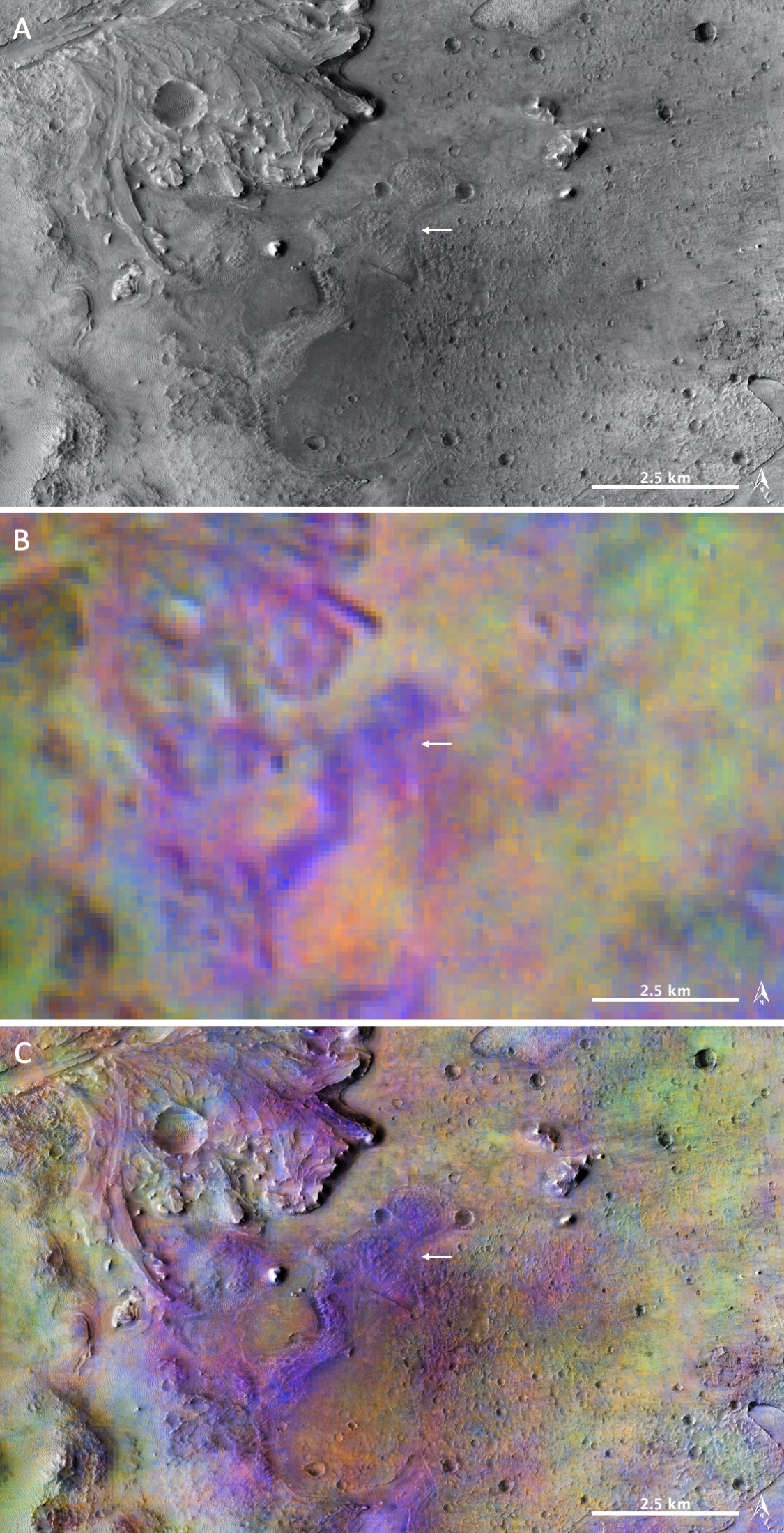THEMIS Spots Olivine-rich Materials in Jezero Crater
Jezero crater is home to the Perseverance rover, which made a spectacular landing on February 18, 2021. As shown in panel A, it arrived at a location (arrow) just outside of terrain hosting rugged outcroppings and sand dunes that were recognized months in advance as hazardous to the rover.
Thanks to a new technological development called Terrain Relative Navigation or TRN, the landing system was able to divert away from the hazardous terrain and land on a smoother surface. All of this was documented for the first time using a set of cameras on board the rover and landing system. NASA produced a video from these cameras that can be viewed here.
The different infrared wavelengths of light or bands measured by THEMIS can be combined into a false-color image using a technique known as a decorrelation stretch or DCS. The DCS image in panel B (a portion of I00921002) combines THEMIS bands 8, 7, and 5 (11.79, 11.04, and 9.35 microns), which can be obtained from the THEMIS stamp layer in JMARS. This combination is sensitive to olivine, a silicate mineral common in volcanic rocks. Olivine-rich materials appear in purple and magenta hues using this DCS combination, as documented by Vicky Hamilton and co-authors in a paper published in 2005.
Panel C combines the visible light image from the Mars Reconnaissance Orbiter Context Camera in panel A with the DCS image from panel B. It shows that the hazardous terrain adjacent to the rover location is olivine rich. A science paper by Mark Salvatore and co-authors in 2018 showed that locations like this have up to 25% olivine content.
The smoother terrain around the rover location displays a mix of colors, including purple hues, that indicate a mixture of materials are present, some of which are olivine rich. Perseverance is equipped with instruments that will be able to identify and quantify the olivine component in the rocks and soils that it encounters. The results will provide ground truth for the THEMIS measurements made from orbit.
